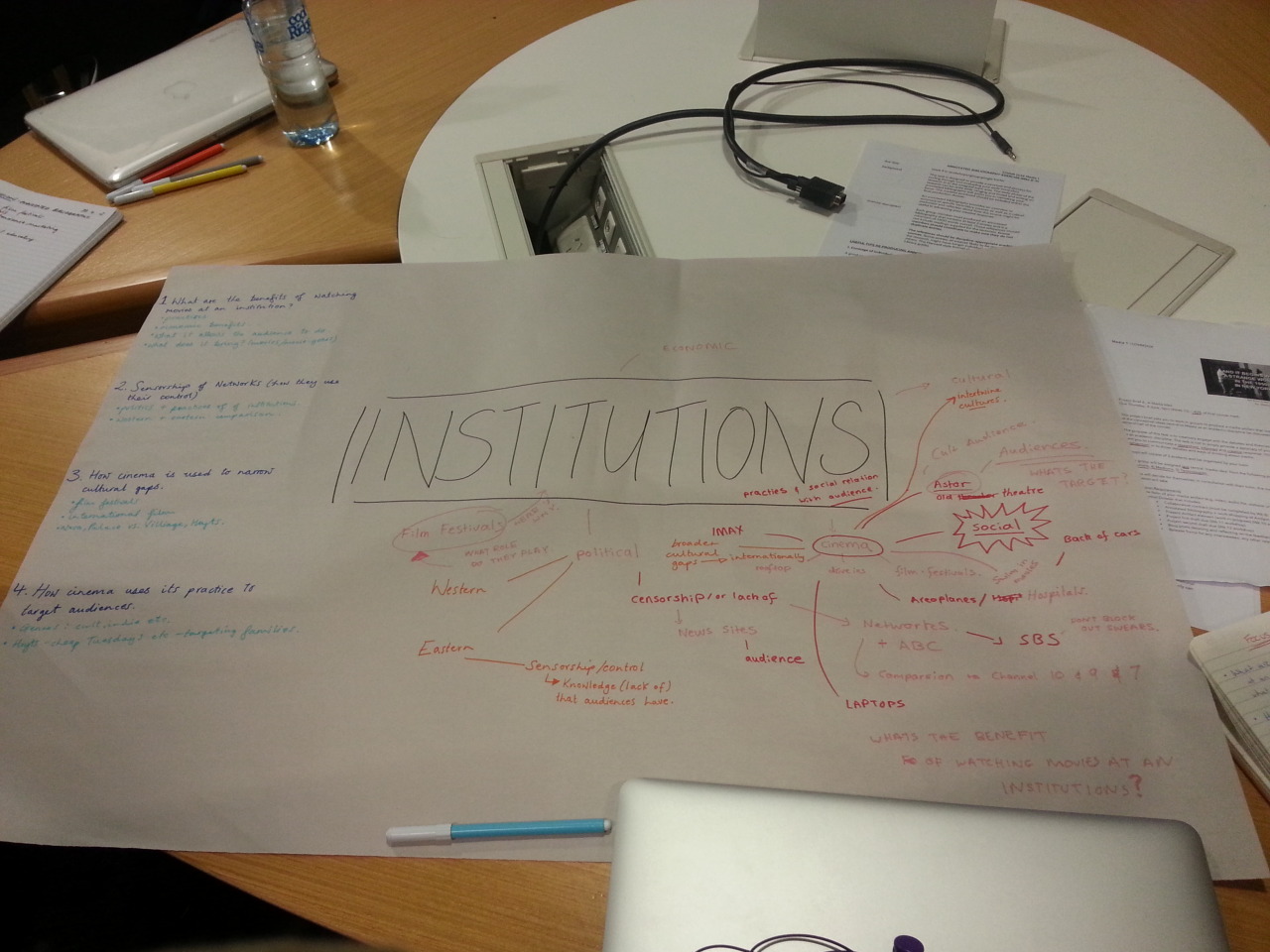 Brainstorming done in todays tutorial about institutions. We as a group started with the two institutions that interested us, Cinema and Network TV. We began to list different forms of cinema and tv and connect issues to them under: economical, political, cultural and social brackets. Some of the ideas and issues we came up with are:
Brainstorming done in todays tutorial about institutions. We as a group started with the two institutions that interested us, Cinema and Network TV. We began to list different forms of cinema and tv and connect issues to them under: economical, political, cultural and social brackets. Some of the ideas and issues we came up with are:
– What are the benefits of watching movies at an institution?
– Censorship and cultural control
– How cinema is used to breach cultural gaps
– How cinema uses it’s practice to target it’s audience
From here after a discussion with Dan we were able to narrow down our focus and look at how Film Festivals as an institution capture a lot of the ideas we were toying with above. We as a group are looking at how Film Festivals are an institution and what role they play politically, culturally and socially. A good starting point for us, when looking for articles would looking at how film festivals are defined as institutions, what they afford and prohibit their audiences or a good case study of how film festivals are used in Melbourne to cover the four main issues we’ve identified.
To start we’re each going to look at least five articles around film festivals before we meet on Tuesday where we will then see what we’ve found and what we can add. Overall I’m pleased with how well we all worked as a group today and excited to continue our brief.

